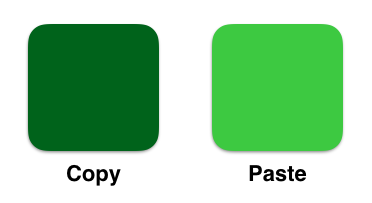First, imitation as a first step to learning is NOT bad. That’s how we learned as kids.
As adults, sometimes we pursue imitation as a shortcut or substitute for learning.
That’s going to be a problem.
Charles Caleb Colton said a while ago (in 1820) – “Imitation is the sincerest form of flattery.”
For starters, we all know that imitation is unnecessary if you can execute and produce value better than what we are trying to imitate.
Let us assume for this discussion that you don’t have the capacity to out-execute what you are trying to imitate. This means you imitate while simultaneously building your capacity to a state where you can out-execute what you are trying to imitate.
Theoretically, this should work like magic.
“Should” is the keyword here.
Why?
Because, in general, imitation fails.
The reason
I call the reason – “Selectively copying convenience.”
Let me elaborate on this a bit…
To keep things simple, pick someone you want to imitate. There are three parts that need consideration:
1. Above the Surface
2. Just below the surface
3. Deep beneath the surface
Let us double-click on each of the above
1. Above the Surface
These are actions you see and the words you hear from that person.This is what is public and visible to everyone.
2. Just below the surface
These are investments that the person has made in the past that DIRECTLY influences the actions the person takes and the words they speak. The company they keep, the books they read and the work they engage in are three of the many things that directly influence what happens in #1
3. Deep beneath the surface
These are an invisible collection of factors that make up the unique YOU in this world. this includes, but not limited to the deep rooted beliefs, worldviews, the biases, the upbringing and more. the cocktail of these factors is what will indirectly influence what happens in #1
For you to imitate someone, you have to consider all three of the above. Unless you are close to this person – I mean really close,you can’t imagine trying to imitate what’s deep beneath the surface.
So, rather than trying to get there, you might end up “selectively copying convenience” – meaning imitate what’s above the surface and what’s partly below the surface -completely missing the boat on what’s beneath the surface.
The Real Problem
It’s not that copying convenience will yield ZERO results. Actually, that would have been good.
The real problem of selectively copying convenience is that it will produce mediocre results. If you are not careful, it will appear like you have got a head start of something big.
It’s a false positive and the key reason for imitations to fail.
What could you do differently?
Well, in short, you can get all the inspiration you want from outside for starters. It helps. Ultimately, everything has to be invested in upgrading your core – what’s deep beneath the surface.
Why?
Because just like you can’t copy that part from anyone else, nobody else can copy that part of you either.
A few highlights to browse are below. You can share a photo-quote with one-click
